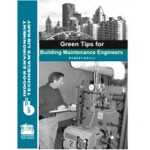
|
| Figure 1. |
Megohmmeters (meggers) are electrical meters used to check the resistance and condition of the motor windings and the condition of the refrigeration and oil environment around the motor windings. A megger is nothing but a giant ohmmeter that creates a very large dc voltage (usually 500 volts dc) from its internal battery. The meter will read out in megohms (millions of ohms). Any motor winding or electrical coil can be checked with a megger. A megohmmeter’s main function is to detect weak motor winding insulation and to detect moisture accumulation and acid formations from the motor windings to ground before they can cause more damage to motor winding insulation.
When dealing with HVACR hermetic and semi-hermetic compressor motors, as contaminants in the refrigerant and oil mixture increases, the electrical resistance from the motor windings to ground will decrease. Because of this, regular preventative maintenance checks can be made with a megohmmeter and can signal early motor winding breakdown from a contaminated system when accurate records are kept.
One probe of the megger is connected to one of the motor winding terminals, and the other probe to the shell of the compressor (ground). Note: Make sure metal is exposed at the shell of the compressor where the probe is attached so that the compressor’s shell paint is not acting as an insulator to ground. When a button is pushed and held on the megger, it will apply a high dc voltage between its probes and measure all electrical paths to ground. It is important to disconnect all wires from the compressor motor terminals when megging a compressor motor.
Also, read the instructions that come with the meter to determine what time interval to energize the megger when checking winding or coils. If possible, it is a good idea to run the motor for at least one hour, disconnect power, disconnect all electrical leads, and then quickly connect the megger to the motor. This will give a more meaningful comparison between readings for the same compressor on different days, because of the approximate same winding temperatures.
Good motor winding readings should have a resistance value of a minimum of 100 megohms relative to ground. In fact, good motor winding resistance should be between 100 megohms and infinity.
Figure 1 lists megohm readings with varying degrees of contamination and motor winding breakdown.
Because of the very high resistance of the motor winding insulation, a regular ohmmeter cannot be used in place of the megger. A regular ohmmeter does not generate enough voltage from its internal battery to detect high resistance problems like deteriorated winding insulation, moisture, or other system contamination.
Listed below are some other important tips service technicians should know about the use of a megohmmeter:
• Never use a megger if the motor windings are under a vacuum.
• Meggers can be used for other electrical devices other than electric motors.
• Always consult with the meter manufacturer or user’s manual for detailed instructions on megging other electrical devices like coils.
• Meggers are often used in preventive maintenance programs, especially before a contractor signs a preventive maintenance contract to determine condition of the electrical devices.
• Any megger with a higher voltage output than 500 volts DC should be used by an experienced technician. A high voltage for too long of a time may further weaken or fail motor windings and the winding insulation could be damaged by the testing procedure.
Publication date: 12/05/2011








